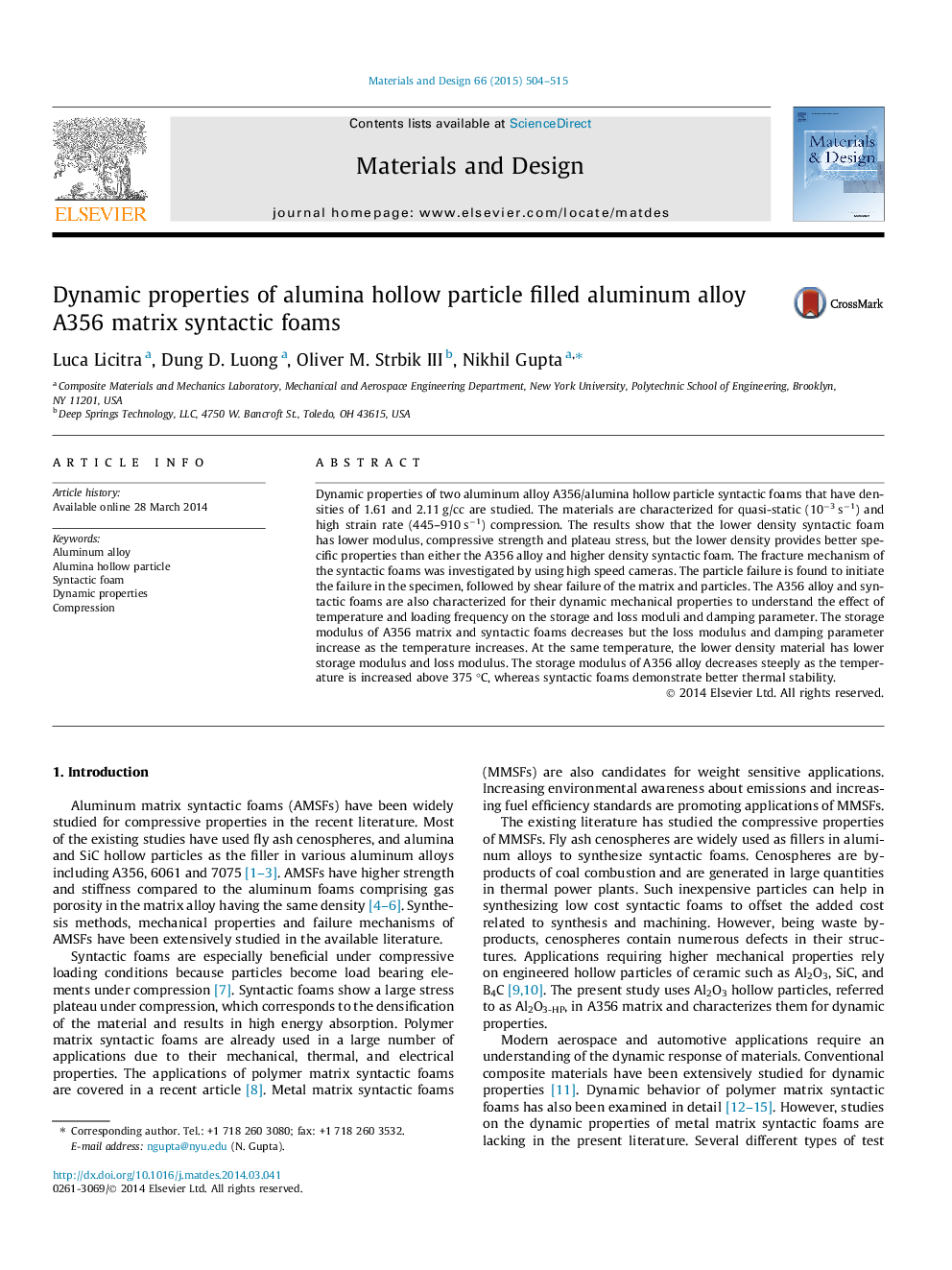| Article ID | Journal | Published Year | Pages | File Type |
|---|---|---|---|---|
| 828757 | Materials & Design (1980-2015) | 2015 | 12 Pages |
•A356/alumina hollow particle syntactic foams are studied in this work.•Quasi-static (QSST) and high strain rate (HSR) compressive properties are studied.•Under QSST compression the lower density foams show better specific properties.•HSR compressive strength values are higher than the respective QSST strengths.•Dynamic mechanical analysis (DMA) is conducted for temperature and frequency effect.
Dynamic properties of two aluminum alloy A356/alumina hollow particle syntactic foams that have densities of 1.61 and 2.11 g/cc are studied. The materials are characterized for quasi-static (10−3 s−1) and high strain rate (445–910 s−1) compression. The results show that the lower density syntactic foam has lower modulus, compressive strength and plateau stress, but the lower density provides better specific properties than either the A356 alloy and higher density syntactic foam. The fracture mechanism of the syntactic foams was investigated by using high speed cameras. The particle failure is found to initiate the failure in the specimen, followed by shear failure of the matrix and particles. The A356 alloy and syntactic foams are also characterized for their dynamic mechanical properties to understand the effect of temperature and loading frequency on the storage and loss moduli and damping parameter. The storage modulus of A356 matrix and syntactic foams decreases but the loss modulus and damping parameter increase as the temperature increases. At the same temperature, the lower density material has lower storage modulus and loss modulus. The storage modulus of A356 alloy decreases steeply as the temperature is increased above 375 °C, whereas syntactic foams demonstrate better thermal stability.
Graphical abstractFigure optionsDownload full-size imageDownload as PowerPoint slide
